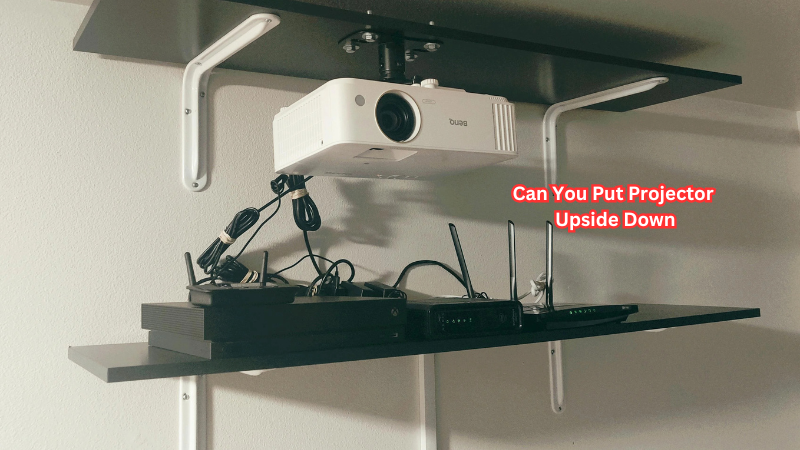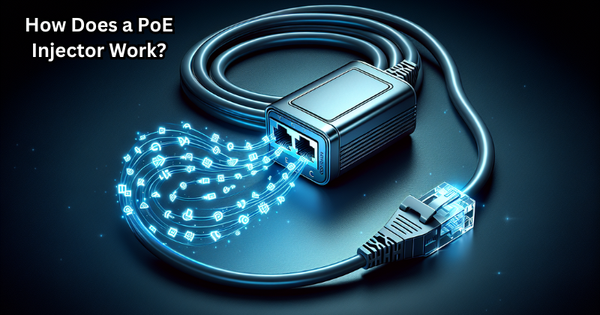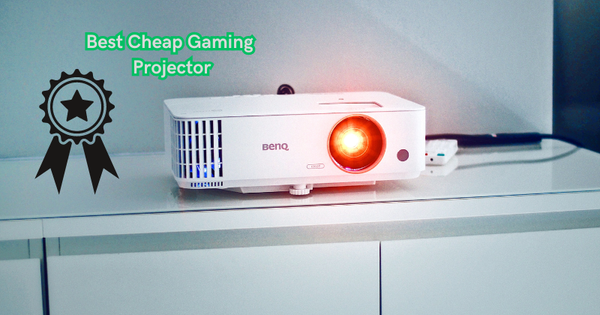Projectors are versatile devices used in homes, offices, and classrooms to deliver large, clear displays for entertainment, presentations, and more. A common question during setup is whether a projector can be installed upside down, such as for ceiling mounting. The answer is yes, as most modern projectors are designed to accommodate this configuration.
Ceiling mounting saves space, ensures an unobstructed view, and creates a professional setup. To achieve this, projectors typically include settings to flip the image for proper orientation.
However, installing a projector upside down requires careful planning, such as selecting the right mount, ensuring proper ventilation, and aligning the projection. This article will explore how and why projectors can be mounted upside down.
Importance of Proper Projector Setup
Before delving into the specifics of upside-down installation, let's first understand why proper setup is essential.
A projector that is not correctly installed can result in distorted images, blocked airflow, and reduced lifespan. Inaccurate alignment may also lead to eye strain for viewers and discomfort for presenters. Therefore, setting up a projector accurately is crucial for optimal performance.
Moreover, upside-down installation is often necessary in specific scenarios, such as mounting a projector on a high ceiling or in an unconventional space. In these situations, it may be the only way to achieve a clear and unobstructed display.
Can You Put the Projector Upside Down?
As mentioned earlier, most modern projectors can be mounted upside down. However, it is always advisable to check the user manual or specifications of your particular projector model to confirm this compatibility.
One critical factor in determining whether a projector can be installed inverted is its lens shift capability. This feature allows the lens and image to be adjusted both horizontally and vertically without distorting the image quality. If your projector has a significant lens shift range, it can likely handle being mounted upside down.
Another important aspect to consider is the cooling system of the projector. When ceiling mounted, projectors may have less space for air circulation, causing them to overheat quickly. Therefore, ensure that your chosen projector has proper ventilation and fan placement for optimal cooling when installing it upside down.
How to Mount a Projector Upside Down
Now that we know projectors can be safely mounted upside down, let's discuss the steps to do so. The process involves selecting a suitable mount, installing it correctly, and aligning the projector for optimal display.
Choosing the Right Mount
The first step is to select a mount designed specifically for ceiling installation. These mounts typically have adjustable arms and brackets to secure the projector in place and allow for easy adjustments. It is crucial to choose a robust and sturdy mount that can support the weight of your projector.
Additionally, some mounts may offer additional features such as cable management systems or adjustable tilt angles. Consider these extra features when selecting a mount to suit your specific needs.
Installing the Mount
Once you have chosen a suitable mount, follow the manufacturer's instructions to install it securely on the ceiling. This step may involve drilling holes and using anchors to ensure that the mount is firmly attached.
It is also essential to ensure that the installation location has proper structural support to hold the weight of both the mount and projector. If you are not confident in installing the mount yourself, it is advisable to seek professional help.
Aligning the Projector
After mounting your projector upside down, you will need to align it correctly for optimal display. Most projectors come with built-in settings or keystone correction features to adjust image orientation and alignment.
First, start by adjusting the lens shift function if your projector has one. This feature allows you to move the lens both horizontally and vertically, making it easier to align the image without physically moving the projector.
Next, use the keystone correction feature if your projector has one. This function helps correct distorted images caused by projecting onto a surface at an angle. Adjusting this setting can help ensure that your display is straight and rectangular.
Finally, make any necessary manual adjustments to fine-tune the alignment of your projected image. Remember to check for any potential obstructions or blockages that may affect the quality of your display.
Precautions When Mounting Projectors Upside Down
While mounting projectors upside down is generally safe and straightforward, there are some precautions you should keep in mind to ensure the safety and longevity of your device.
First, make sure that the projector is securely attached to the mount and can withstand any vibrations or minor movements. This step will prevent the projector from falling or shifting, potentially damaging both the device and surrounding objects.
Secondly, check for proper ventilation and airflow around your projector when mounted upside down. As mentioned earlier, ceiling installations may restrict air circulation, causing overheating issues. Consider using additional cooling tools if necessary.
Lastly, always follow manufacturer instructions and guidelines when mounting a projector upside down. Doing so will ensure that your device remains under warranty and performs optimally.
Benefits of Upside-Down Projector Mounting
Aside from the practical reasons mentioned earlier for mounting projectors upside down, there are also various benefits to consider. Here are a few advantages of upside-down projector installation:
- Space-saving: Ceiling-mounted projectors take up less space and can be easily hidden from view, freeing up valuable floor or desk space.
- Improved visibility: Mounting a projector upside down often results in better visibility for viewers as it eliminates potential obstructions like heads or objects in front of the screen.
- Reduced eye strain: Properly aligned projectors placed at an appropriate height can reduce eye strain for viewers by eliminating the need to crane their necks upwards.
- Enhanced aesthetics: In some cases, mounting a projector upside down can improve the overall aesthetics of a room by keeping cables and equipment out of sight.
These are just a few of the potential benefits, and there may be other advantages specific to your particular setup or needs.
Potential Challenges of Upside-Down Installation
While mounting projectors upside down has many benefits, there are some potential challenges to consider.
One challenge is the increased maintenance and cleaning required for ceiling-mounted projectors. As they are typically harder to access, dust and debris may accumulate more quickly on the lens and internal components. Regularly clean your projector to ensure optimal performance.
Another difficulty may come from cable management when installing a projector upside down. Cables may need to be routed through walls or ceilings for a cleaner setup, which can be time-consuming and require professional help.
Lastly, ceiling-mounted projectors may also have limited options for height adjustments compared to their counterparts mounted on a table or stand. This limitation may affect the overall display quality, especially if the projector is not positioned at an optimal height.
Alternative Options
If mounting a projector upside down is not feasible or suitable for your setup, there are alternative options worth considering.
- Tabletop stand: Some projectors come with a tabletop stand that allows them to be placed on a flat surface. This option may work better for smaller rooms or if you need more flexibility in positioning the projector.
- Wall mount: If ceiling installation is not an option, consider using a wall mount. Wall mounts can provide similar benefits to ceiling mounts and may offer more flexibility in terms of placement and adjustments.
- Floor stand: For even more versatility, floor stands allow you to move the projector around as needed. However, keep in mind that this option may take up more floor space and may not be suitable for permanent installations.
Whichever option you choose, make sure to consider your specific needs and setup before deciding on the best placement for your projector. With proper installation and care, a ceiling-mounted projector can provide an immersive viewing experience for all your media needs.
FAQs
Can you put a projector upside down for mounting on a shelf?
Yes, you can put a projector upside down when mounting it on a shelf. This setup is often used for ceiling installations. Ensure that the projector is securely attached and that its ventilation is not obstructed.
How do you adjust the picture if a projector is upside down?
To adjust the picture when a projector is upside down, access the projector's menu using the menu button. Navigate to the image settings, find the option for image orientation or projection mode, and press enter to select the correct setting that flips the image accordingly.
What steps should you take in the menu to flip the picture for an upside-down projector installation?
First, press the menu button on your projector's remote control or unit. Scroll through the menu options until you find the display or image settings. Look for the screen orientation option, and press enter to toggle between different projection modes until the picture is correctly oriented.
Is using the menu button necessary for setting up a projector on a shelf upside down?
Yes, using the menu button is essential when setting up a projector upside down on a shelf. This allows you to access and adjust the projector's settings to ensure the picture displays correctly, accommodating the upside-down installation.
Conclusion
In conclusion, mounting projectors upside down is a feasible option, widely supported by modern designs that offer image flipping and lens shift capabilities.
This installation method not only saves space but also enhances visibility and aesthetics, making it a popular choice for both professional and home environments. However, challenges such as increased maintenance and complex cable management must be considered.
Proper setup is crucial to ensure optimal performance and longevity of the device. For those unable to ceiling mount, alternative options like tabletop stands, wall mounts, or floor stands offer flexibility without compromising on display quality. Ultimately, understanding these aspects ensures a successful installation tailored to specific needs.





